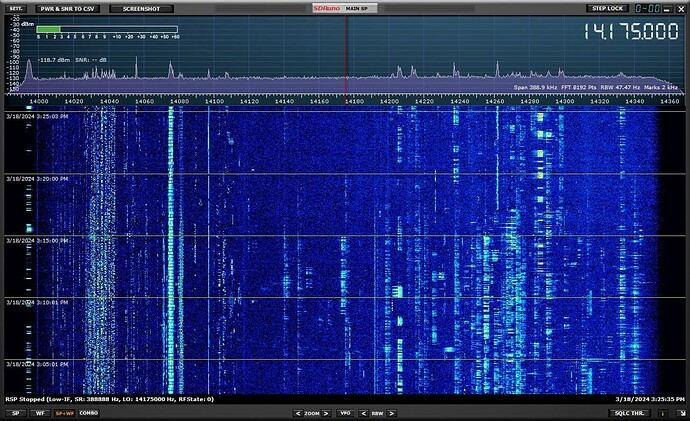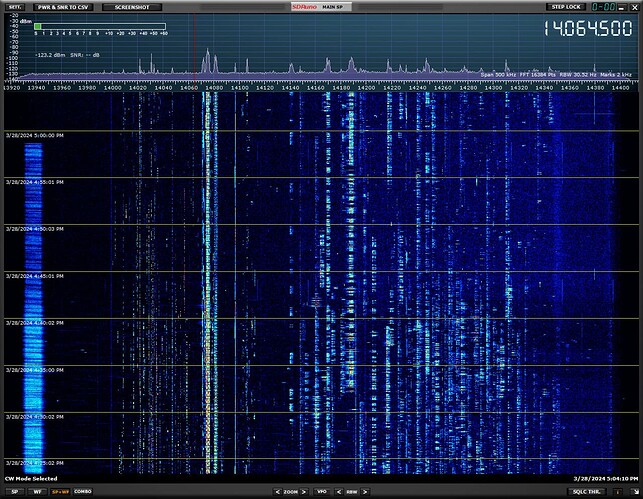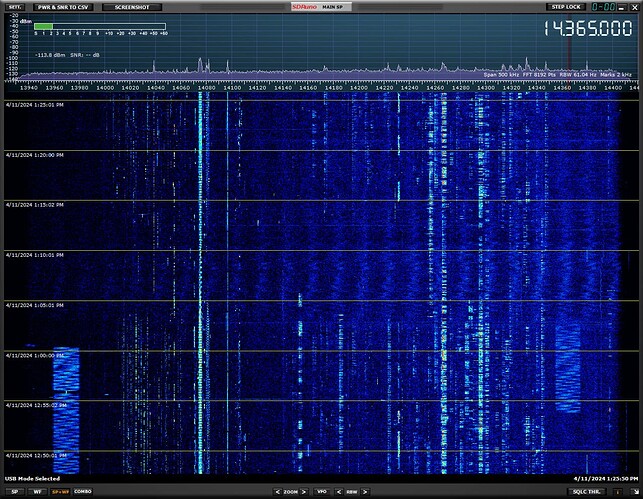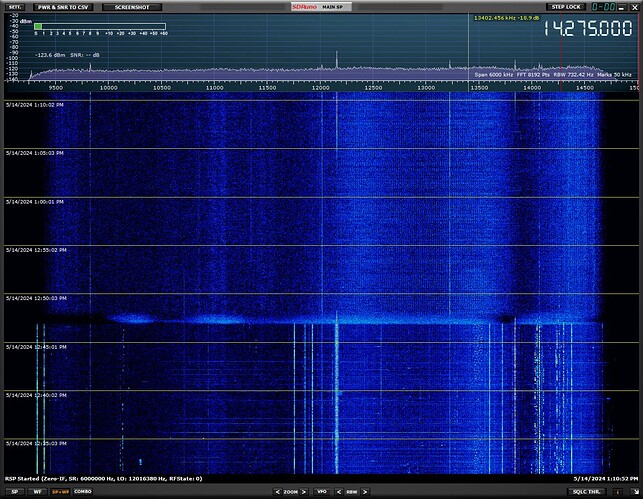TL;DR: Waterfall screenshot of HF black-out caused by solar flare. SMS/email alert received six minutes after onset of black-out, potentially useful for SOTA activations.
A few months ago, I subscribed to alerts of various space-weather conditions offered by the NOAA Space Weather Prediction Center. One of the alert triggers I enabled is for “X-ray Events,” which are the most immediate effect of a solar flare and cause short-term HF black-outs on the sun-lit side of Earth.
I receive the alerts by email and also by text message (SMS). The latter is accomplished by subscribing with an email address comprised of my phone carrier’s email-to-text gateway (in my case as a T-Mobile subscriber: <ten_digit_mobile_number>@tmomail.net).
The alerts seem to be timely. I receive them some minutes before the X-ray event/flare/black-out is indicated on the websites where I view current space weather.
Still, I was wondering, were I to be operating / listening on the air at the time of a flare, what the time delta would be between observing the onset of HF black-out conditions (i.e., hearing signals diminish) and receiving the alert. Would it be prompt enough to be useful information during a 30-minute summit activation in which signals disappear for an unknown reason? If signals degraded due to a flare, I might wait it out on summit; on the other hand, if due to the onset of a severe geomag storm, I likely wouldn’t.
To get an idea of the black-out-to-alert latency, I’ve been running my SDR during daytime so as to display the 20 m band on a waterfall with a slow rate of descent, spanning about 25 minutes along the vertical axis.
On receiving the alert for the moderate, M6.7 flare that occurred on 2024 Mar 18 at 1916 UTC, I took a screenshot and captured my first clear, graphical indication of an HF black-out (perhaps “brown-out” would be more fitting for this one):
I would judge the fading to become apparent on the waterfall image at about 3:17 PM local time, or 1917 UTC. Not every signal outright disappears. But there’s a clear drop in signals over on the SSB side of the band, the morass of FT8 signals becomes weaker (more blue and less yellow/red), and an apparent CW contest thins out quite a bit.
The alert for this flare was received at 3:23 PM local time or 1923 UTC, both in my email inbox and on my phone’s SMS app. That’s a latency of six minutes, so not exactly real-time, but still quick enough to be useful information when operating, on summit or otherwise.
The text of the alert says:
Issue Time: 2024 Mar 18 1918 UTC
ALERT: X-Ray Flux exceeded M5
Threshold Reached: 2024 Mar 18 1916 UTC
NOAA Scale: R2 - Moderate
So the time at which the flux reached NOAA’s threshold to qualify as an “event” seems to correspond pretty well, in this case, with when the fade-out first becomes apparent on the waterfall.
I’m going to continue running the slow waterfall as much as practical during daytime. I’d like to see if the alert latency varies. It would also be interesting to capture the black-out from a solid X-class flare.
73,
Matt
W4GO




